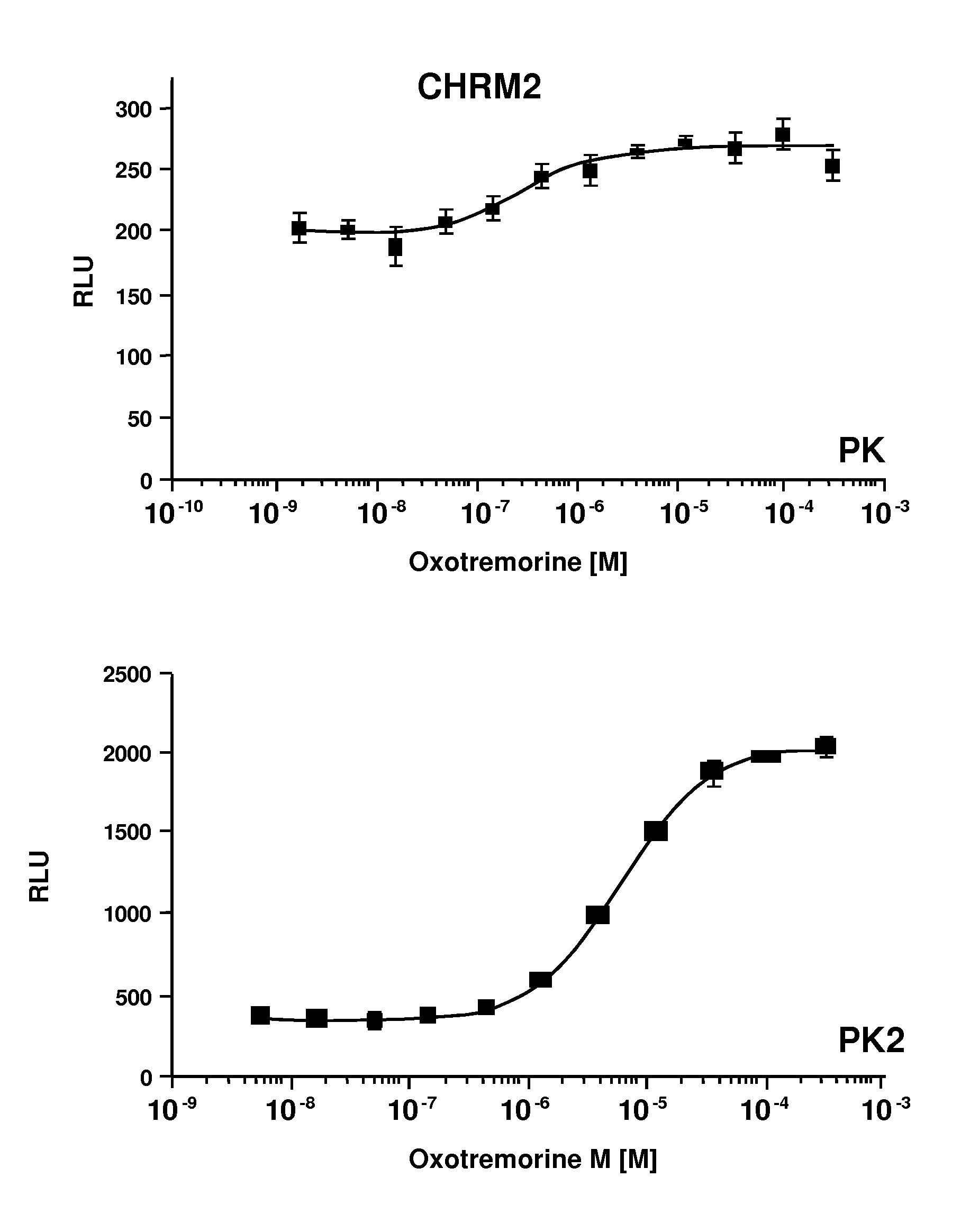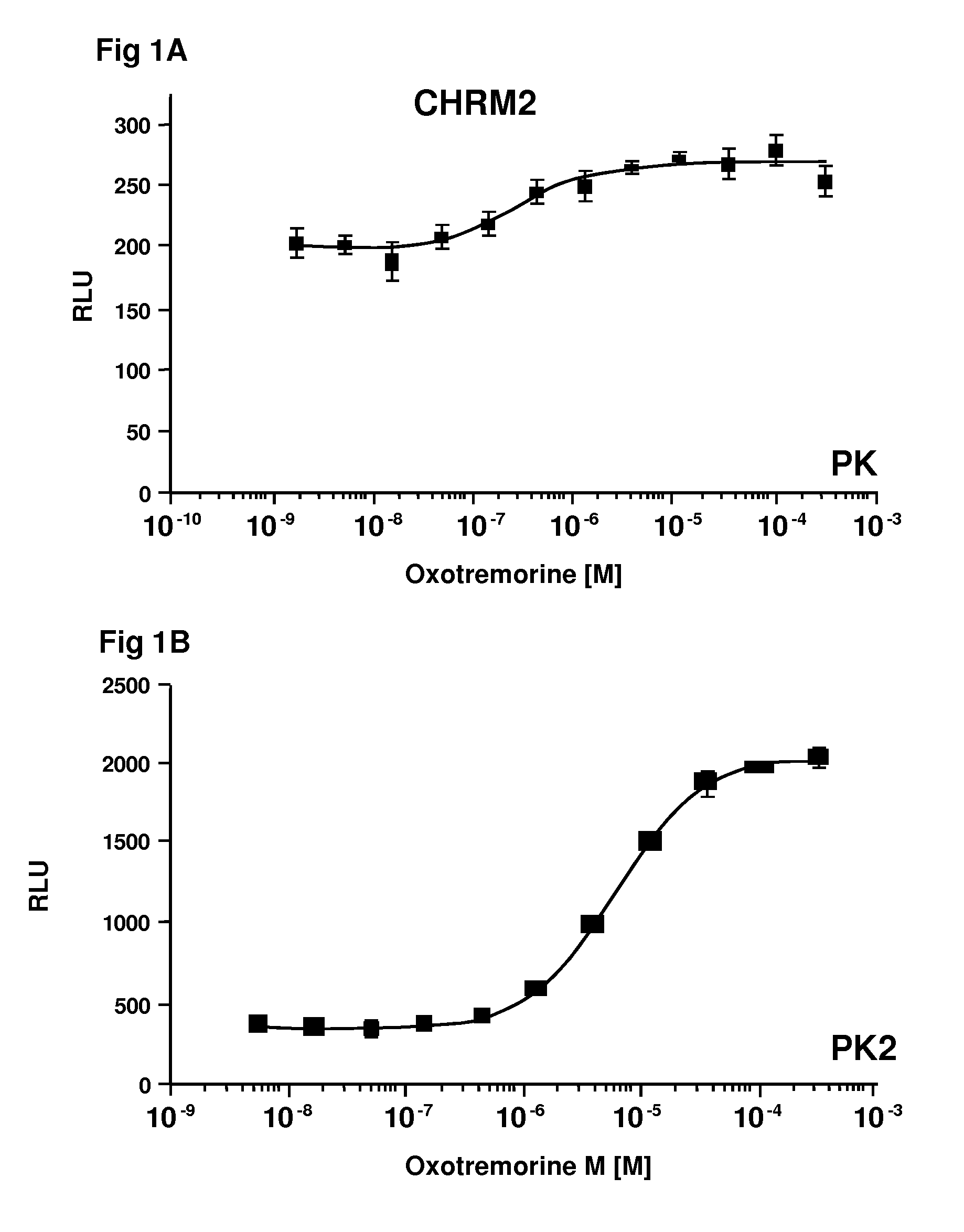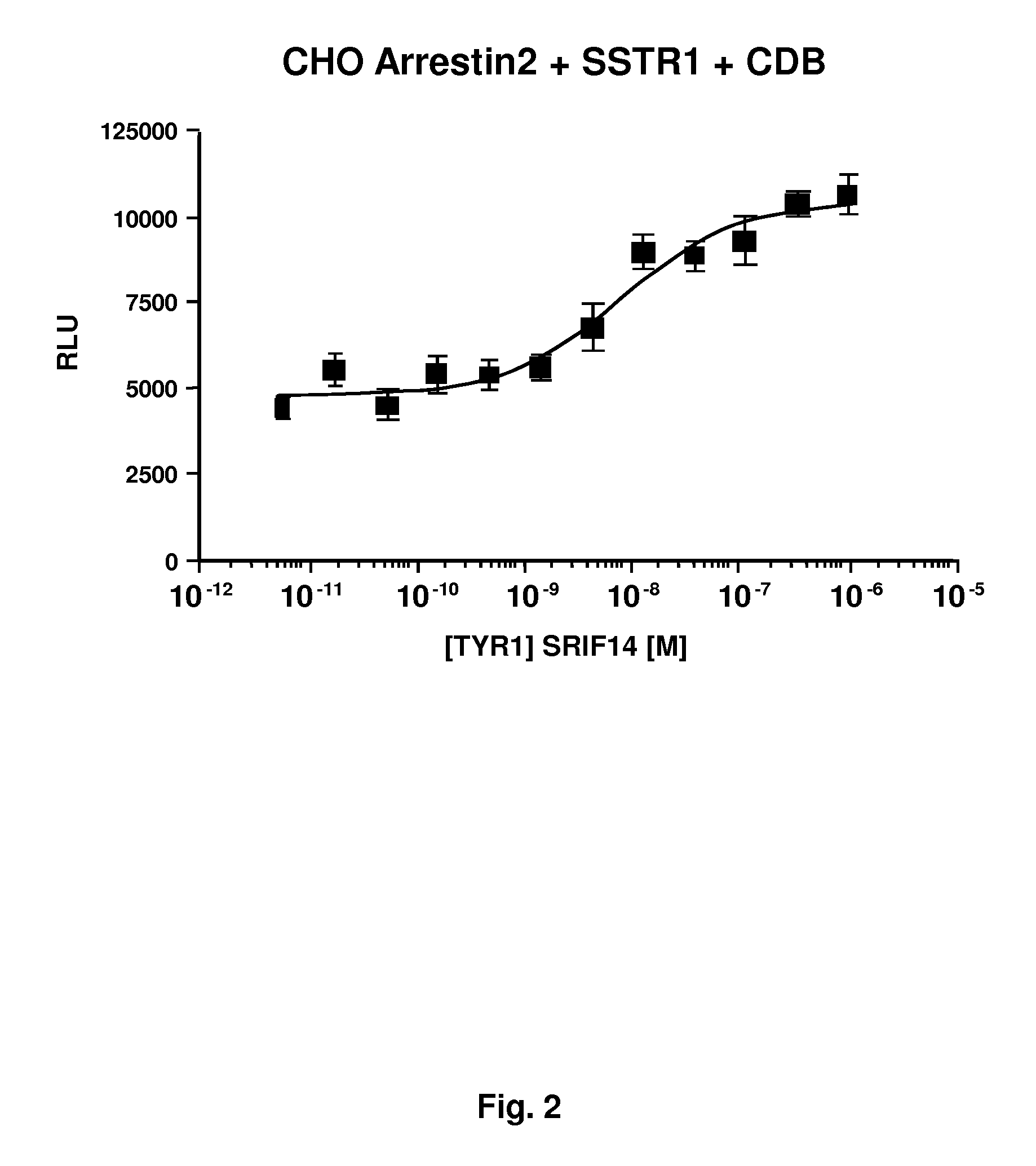GPCR Arrestin Assays
a technology of arrestin and gpcr, which is applied in the field of agonists or antagonists of g proteincoupled receptors, can solve the problems of complete non-functionality of gpcrs, and achieve the effects of robust signal, enhanced arrestin binding, and enhanced binding
- Summary
- Abstract
- Description
- Claims
- Application Information
AI Technical Summary
Benefits of technology
Problems solved by technology
Method used
Image
Examples
first embodiment
[0041]In a first embodiment, the method relies on tuning the factors that affect the binding affinity of the expression products, by properly selecting the EFC members as to their affinity for complexing to form an active enzyme and optionally modifying the intact GPCR to enhance its affinity for arrestin. An absolute signal and a signal to background ratio can be obtained that provides for sensitive detection of the arrestin binding to the GPCR. The binding of arrestin to the GPCR is detected using a β-galactosidase substrate that produces a detectable signal.
second embodiment
[0042]In a second embodiment, the method relies on the existence of a protein of interest and a GPCR being bound together for activation and signal transduction, where an ED is fused to one of the proteins and a ligand is employed to bind to one of the proteins, with the restriction that the ligand will be selected so as to not bind to a GPCR when fused to the ED. Transactivation results in the activation of the GPCR, where the arrestin-EA fusion binds to the transactivated GPCR.
[0043]In the first embodiment, the first construct comprises a gene encoding for a GPCR linked to a β-galactosidase fragment, conveniently the small fragment of β-galactosidase (“ED” or “PK”), optionally through a linker comprising at least one phosphorylation site. The genetic construct is under the control of a transcriptional and translational regulatory region functional in the cellular host. The second construct comprises a gene encoding for arrestin fused to the other fragment of β-galactosidase under ...
PUM
| Property | Measurement | Unit |
|---|---|---|
| volume | aaaaa | aaaaa |
| volume | aaaaa | aaaaa |
| volume | aaaaa | aaaaa |
Abstract
Description
Claims
Application Information
 Login to View More
Login to View More - R&D
- Intellectual Property
- Life Sciences
- Materials
- Tech Scout
- Unparalleled Data Quality
- Higher Quality Content
- 60% Fewer Hallucinations
Browse by: Latest US Patents, China's latest patents, Technical Efficacy Thesaurus, Application Domain, Technology Topic, Popular Technical Reports.
© 2025 PatSnap. All rights reserved.Legal|Privacy policy|Modern Slavery Act Transparency Statement|Sitemap|About US| Contact US: help@patsnap.com



